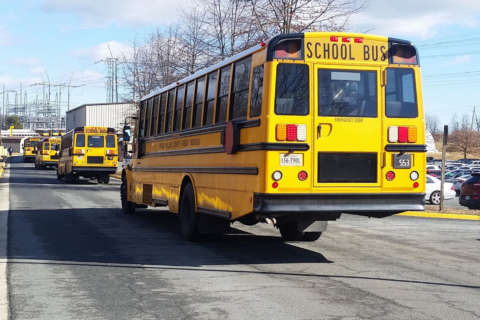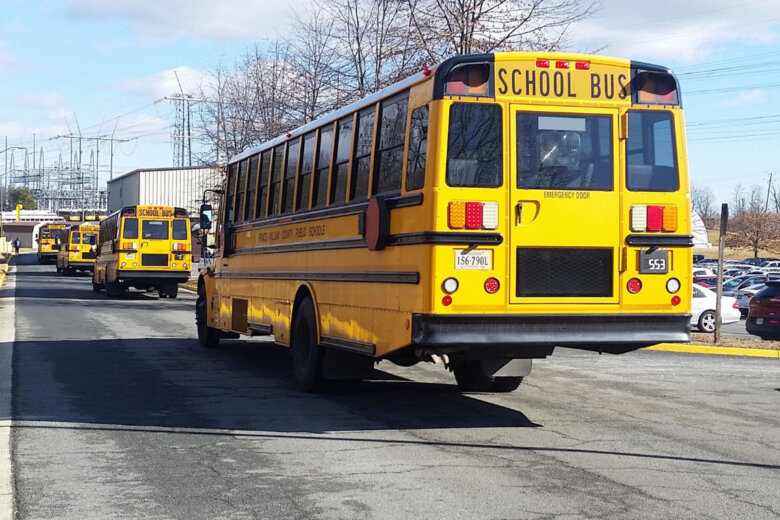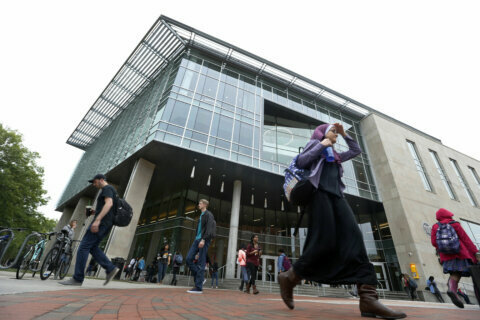This article was republished with permission from WTOP’s news partner InsideNoVa.com. Sign up for InsideNoVa.com’s free email subscription today.

The numbers of Prince William County middle- and high-schoolers failing at least two classes increased dramatically during the first half of this school year as students struggled with virtual learning.
According to information provided by school division staff, while the number of students failing typically increases from the first quarter to the second quarter of each school year, those numbers are particularly elevated in 2020-21.
In Prince William high schools, the percentage of students failing two or more classes went from 21.9% in the first quarter of the school year to 26.3% in the second. A year earlier, before the COVID-19 pandemic stopped schooling in its tracks and forced schools to close to in-person learning, the percentages in the first two quarters were 10.4% and 15.1%, respectively.
The increase among middle schoolers has been even more pronounced. In 2019-20, the percentage of students failing more than one class went from 3.9% in the first quarter to 5.1% in the second. A year later, those percentages jumped to 13.9% in quarter one and 17.9% in quarter two.
Starting in late February and early March – about halfway through the third quarter – in-person classes were offered to all students, and more are expected to return to classroom learning twice a week when the fourth quarter begins next month. The Prince William School Board also directed staff last week to prepare a plan for schools to offer in-person learning five days a week in the fall, with options available for virtual learning.
According to a staff report to the school board in February, students who were performing below average before the pandemic fell even further behind during the pandemic.
“All schools are working to support students who are struggling or underperforming. The High School Office reports observations at that level suggest that students who have previously struggled are having greater difficulties this year, while above-average students seem to have adapted better to the challenges of virtual learning,” the report says.
The report noted, however, that year-over-year comparisons at the high school level are difficult because the system transitioned to rolling gradebooks. That approach allows grades to be changed as students demonstrate proficiency in a subject, which, the report stated, lets students focus on outcomes rather than timetables.
Earlier in the school year, PALS (phonological awareness literacy screening) results for the youngest Prince William students showed a dramatic increase in the number needing help with reading in nearly all of the division’s elementary schools. Between fall 2019 and fall 2020, the number of students failing to reach target benchmarks increased by 16 percentage points. For Hispanic students, the increase was most pronounced, with the percentage of students in need of intervention growing by 23 points.
In early March, new PALS numbers showed improvement in reading proficiency from the fall. Jennifer Cassata, the school system’s director of accountability, said the percentage of elementary school students at or above reading level fell from 76% at the end of the second quarter last school year to 68% this year.
In math assessments for division elementary schools, the pass rates for grades three, four and five were 68%, 73% and 70%, respectively. Pre-pandemic math data was not immediately available, though.
Last week, Cassata told the School Board that educators were seeing some “leveling off” of the declines from the second quarter last year.
She added that for the second half of the year, comparisons between the 2019-2020 school year and 2020-2021 school years would largely be irrelevant. When schools were hurriedly shut down a year ago – midway through the third quarter – grading of new material largely stopped.
If students are back in classrooms next fall, in addition to identifying those who will need extra assistance, principals and teachers are already preparing to have to review material covered this year.
Parkside Middle School Principal Mary Jane Boynton told the School Board that her teachers hold monthly department meetings to track what students are struggling with or picking up on.
“The grade book is really the hub of everything,” Boynton said. “Our teachers are able to show each other how their students are doing. … My sixth-grade teachers can share ‘Well, we were working on integers and we worked through this, but I think you’re going to have to re-look at it again next year because we had those percentages.’ … They can assist each other.”
The division has also been working on an enhanced summer school program since fall, with virtual and in-person options expected to be available for students needing remediation. It will have some help in standing up that and other programming. On Tuesday, Rep. Jennifer Wexton told InsideNoVa that the division should be receiving roughly $89 million in new funding from the American Rescue Plan Act passed earlier this month.
Jared Foretek covers the Manassas area and regional news across Northern Virginia. Reach him at jforetek@insidenova.com








